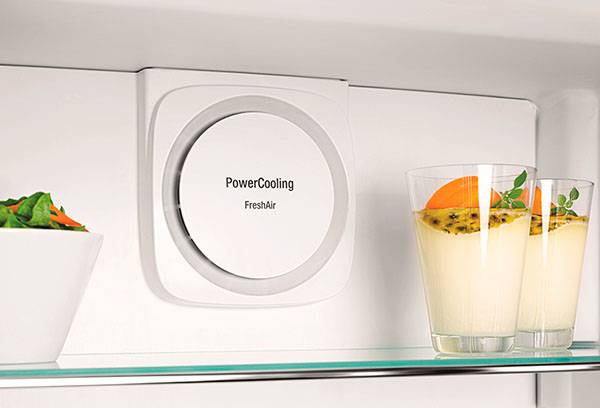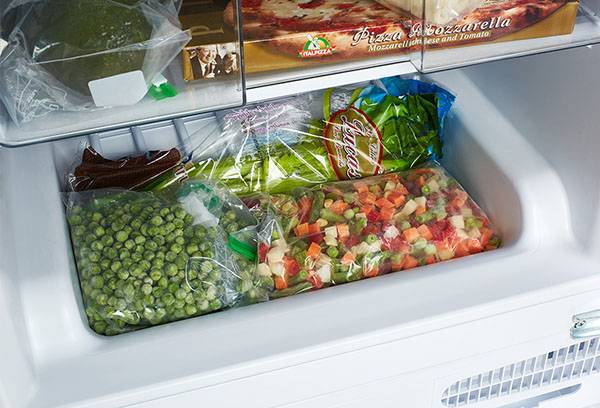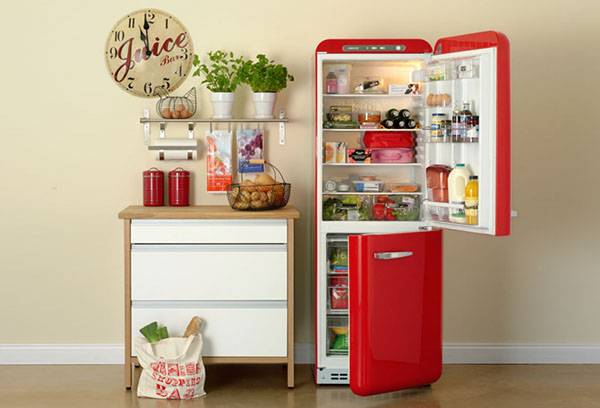Pros and cons of No frost versus drip system
Content:
Of course, we are grateful to the technological progress that it saved us from the need to defrost the refrigerator every month manually, spending a good part of the weekend on it. But is it really vital to overpay for No frost, or is the drip system quite up to the task?
Differences in operation
If you still do not know what No frost is, the translation will help you understand the principle of this system. From English, this phrase can be translated as “no frost”, which, in fact, is the main task of the automatic defrosting system. True, it cannot be said that this “motto” does not work for the drip removal of moisture. Then what is the difference?
No frost refrigerators are positioned as more advanced cooling systems compared to drip systems, and, not knowing their operating principle, you might think that these are two fundamentally different technologies. In fact, these automatic defrost systems have more similarities than differences.
- Both technologies require an evaporator. What it is? This is a structural element that provides enhanced cooling of the rear wall of the refrigerator during compressor operation.
- At this time, in both systems, moisture condenses on the surface of the cold wall, turning into small ice crystals.
- During the cycle, when the compressor does not work, the back wall heats up and the ice floes melt.
How the refrigerator will dispose of melted ice floes will be the defining difference in technology.
- In the refrigerator with drip, moisture flows down the grooves into a special compartment, from which it evaporates into the room when the compressor starts up again and the compartment with liquid heats up.
- No frost does not imply dripping water: moisture from the refrigerator is removed by fans due to air circulation.
By the way
Another difference can be called the location of the evaporator: when dripping moisture, it is located behind the rear wall, while in the “know-how” it can be placed between the refrigerator and freezer.
It turns out, no matter what technology is used in your refrigerator - No frost or drip system - manual defrosting does not threaten you anymore. And if so, is it worth it to overpay for an advertised system?
No frost or drip system?
Knowing how each of these automatic defrost systems works is useful, but does not answer the main question. So which is better: No frost or drip system? A priori, it is believed that “know-frost” is a more modern and advanced technology, as it appeared later, but it is believed that such an elevation of one technology over another is nothing more than a marketing ploy. The most important of the praised qualities of No frost is present in drip refrigerators. Do you need to defrost refrigerators with these moisture-removing technologies? No, and this is the main thing. Whether the remaining bonuses are worth the significant overpayment is up to you.
- “Know Frost” allows you to achieve a uniform temperature on all shelves of the refrigerator.
- After opening the door, the temperature in the chamber quickly equalizes.
That’s probably all. Yes, No frost freezers freeze foods faster, but this is compared to old manual defrosters, so this fact should not be decisive in solving the dilemma: No frost or drip system.
What about flaws? There are slightly more of them, but in the bulk they are as insignificant as the advantages.
- It is believed that the operation of fans can lead to a quick airing of food, but this is rather a myth. Firstly, the air flow is not so strong that it is noticeable. Secondly, the food is not in the refrigerator compartment long enough for changes to manifest. And thirdly, this is easy to avoid if you store food in containers and packaging.
- Typically, such refrigerators have less usable volume. This is due to the fact that the evaporator in these models is slightly larger than in the drip.
- Due to the constant operation of the Know Frost fans, refrigerators consume more energy, but this amount is unlikely to make significant changes to your electricity bill.
- Well and another minus is the increased noise level due to the same fans. True, in good models, the operation of the system is almost inaudible.
The only significant drawback of such a refrigerator is its price: think a few times when deciding whether to overpay, because there are quite few complaints about something not working, both with No frost and with drip technology.
By the way
The removal of a large amount of moisture, which can occur inside the refrigerator in humid climates, is more effectively carried out by “know-frost”. But in a dry climate, where moisture will get inside the equipment in a minimal amount, its use is not entirely justified.
And which one is better to choose a freezer?
We have already mentioned that No frost freezers freeze foods very quickly, which, of course, is good. But the problem is that only this automatic defrosting system can be used in freezers: drip is not suitable for technical reasons. Most modern freezers are equipped with this particular system, and if you have an old model, it means that it is 100% manual defrosting.
Check the type of refrigerator that you looked at: if it is Frost free, then only the freezer is equipped with the “know frost” system, and the refrigerator will have a drip of moisture. If in front of you is Full no frost, then this technology has both a refrigerator and a freezer.
By the way
In Europe, know-frost is not as popular as one might think. Not only do Europeans often give priority to the drip technology of the refrigerator, but also models with manual defrosting of the freezer take not the least place in the sales ranking.
What about defrosting?
You still doubt whether it is necessary to defrost equipment with such systems at least occasionally? In fact, not in vain: manufacturers recommend that preventive defrosting be carried out about once a year, but most owners of refrigerators with automatic defrosting resort to this measure only when something does not work. The rest will tell you that they did not defrost it from the moment of purchase.
That is, the instructions of many models claim that an additional defrosting session is still needed, but in fact it turns out that nothing will happen to the drip system or No frost if it is not carried out.
It is easy to answer the question of which is better: automatic defrosting or manual. But to make a choice between No frost or a drip system is not so simple. Analyze the parameters of the place where the refrigerator will be installed, your needs and preferences, and only when your head has a clear picture of what you need, go to the store.




I'm tired of this ice and many hours of defrosting, I will take the know-frost of the already tested Indesit firm. Thawing a year to prevent thawing is not a big deal, for how much time will be saved